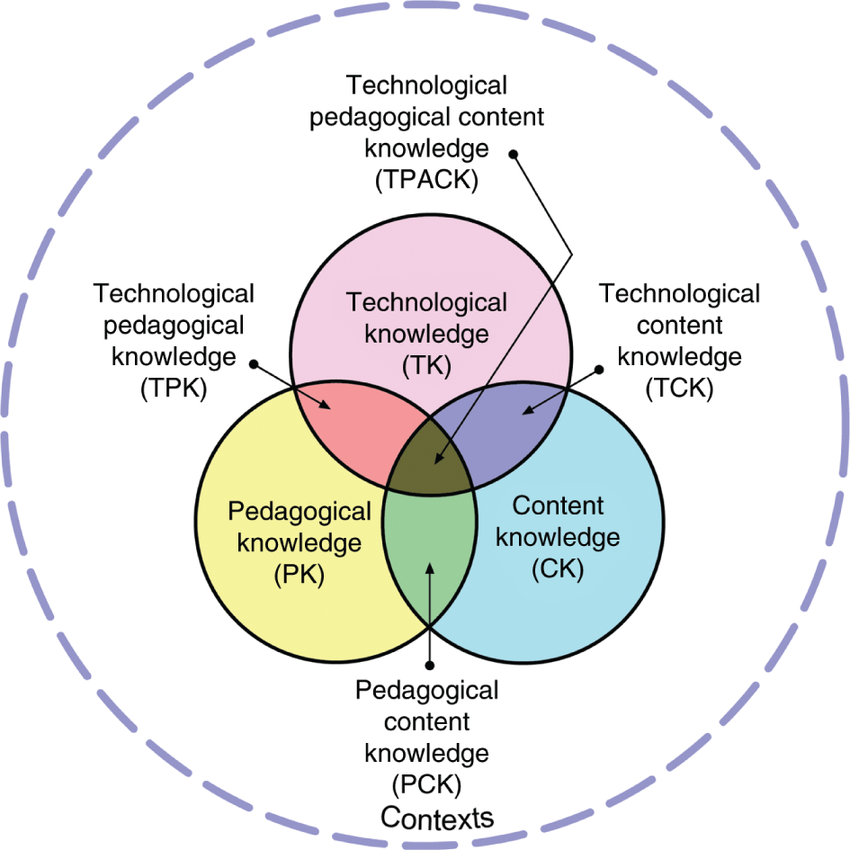The TPACK Framework
- isiscf
- Jul 25, 2023
- 3 min read
EDUA 6378 – Integration of Technology into the Curriculum

The TPACK diagram; was an excellent visual for understanding teaching with technology. Not to oversimplify, “TPACK is understanding how to use technology to teach concepts in a way that enhances student learning experiences.” (PowerSchool, 2022). The same article cites an example of delivering content to students using your learning management system (LMS). Even though the teacher has sufficient knowledge of content (CK) and our LMS (TK), the teacher might subject students to an entire online course of text-based PDFs because of the chosen strategy. (PowerSchool, 2022) Therefore, teachers must understand the technology and how to apply this appropriately, thus what is called merging content, knowledge, and technology effectively to enhance student learning. According to the PowerSchool author (2022), teachers can level up to Technology Content Knowledge (TCK) if they recognize how content could be presented more interactively, such as using videos, class discussions, games, etc., utilizing the Learning Management System.
Therefore, (PowerSchool, 2022) cited how applying technological, pedagogical, and content knowledge to a lesson would look like (1) Content Knowledge (CK), the teacher would need to have a solid understanding of the specific content, for example, the solar system (2) Pedagogical Knowledge (PK), the teacher would need to understand the best practices for teaching middle school science and small group collaboration (3) Technological Knowledge (TK), research the digital tools available to you and which do you know well enough to use, and which would be most appropriate for the lesson.
For example, as cited by (PowerSchool, 2022), if the teacher focuses on where the primary forms of knowledge intersect, the goal is to view the lesson and strategy through the TPACK lens or the center of the model where all primary forms of knowledge blend together. In a blended model of primary forms of knowledge, focused where they merge, this is what the lesson plan would look like (1) Pedagogical Content Knowledge (PCK), the teacher understands the best practices of teaching specific content to specific students (individualized) (2) Technological Content Knowledge (TCK), teachers need to know how available digital tools can enhance or transform content, focus on delivery and student’s ability to be engaged and interactive (3) Technological Pedagogical Knowledge (TPK), teacher understanding how to use the digital tools as a means for learning outcomes and experiences you desire.
Using TPACK together to improve the activities of the original lesson as demonstrated in (PowerSchool, 2022), (1) The teacher summarizes and creates small groups, where students collaborate and take a “check for understanding quiz” using a learning management system. Develop an interactive question on the topic, for example, the solar system with blank labels, and students drag and drop labels from the answer key. (2) The teacher gives out a device with recording capabilities and provides access so students can use apps like TikTok to record one another, explaining the content and its importance. After recording each student's video, students would upload a media album and let other students watch each other’s videos and leave comments. (3) Instead of just researching the topic, students could be asked to compare their work and draw conclusions similar to or different from what they find. Students could write about their learning and create visual representations like a flow chart showing comparisons or a video presentation explaining their learning. (4) Digging deeper, the teacher could expand the process by having students analyze the connections between different animals and plants in their natural habitat and what would happen if either was placed in the other’s natural habitat. Again, the group would review the findings and compile them as evidence to make their case using other references found using Padlet, Evernote, or similar tools.
After reviewing this lesson plan case study using TPACK Framework to enhance lesson planning, implementation, and presentation for learning, I can see how this model is so much more versatile and exciting for students in a classroom (in-person or virtual). With the right digital tools and a strong understanding of how to blend technology with Content Knowledge and Pedagogical Knowledge, teachers can design creative lesson plans resulting in great interactive and layered strategies blended with all three forms of knowledge. This will certainly engage students who want to explore, investigate, and use video creation apps to record themselves and receive feedback. Overall, this approach to lesson planning has the potential to make the world of learning exciting and enjoyable for students.
Reference
PowerSchool. (2022, April 20). The TPACK Framework Explained (With Classroom Examples). Powerschool.com. https://www.powerschool.com/blog/the-tpack-framework-explained-with-classroom-examples/



Comments